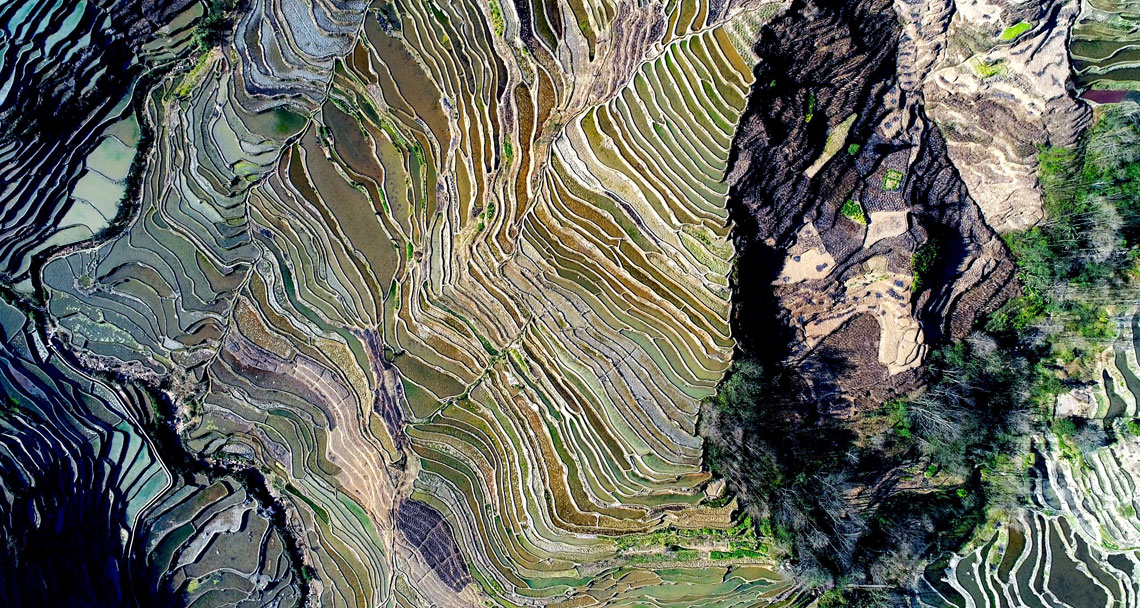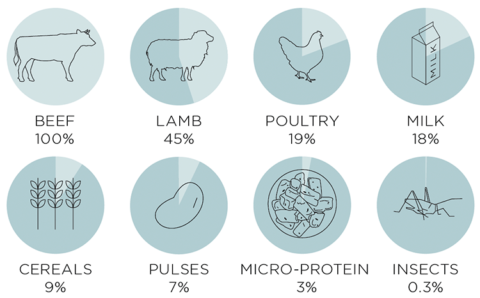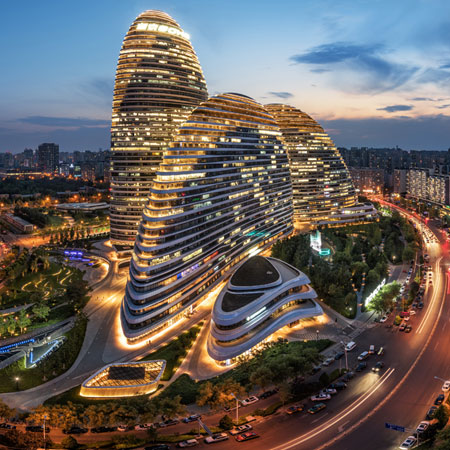As global populations grow – to a predicted nine billion by 2050 – and diets evolve, sustainability becomes an increasingly significant issue. Resources (particularly land and water) are limited and consumer behaviour is changing. Food producers cannot ignore these factors and need to address whether they are supplying what the consumer wants, at the right price, at a sustainable cost and to the right location.
Agriculture sustainability is a global concern. One country cannot export its problems to another and claim a successful reduction of an issue such as carbon emissions or water use. Countries need to explore the tensions between consumer demand and productive capacity.
Water sustainability
Consumers in developed nations are now accustomed to accessing a wide selection of fresh produce, regardless of seasonality. Imports have been the only way to meet this demand. For these countries, this trade in so-called ‘blue water’, net imports of water in food, is a major concern in achieving sustainable agriculture targets.
In 2018, the Economist Intelligence Unit (EIU) published its Global Food Sustainability Index, covering 67 of the world’s major agricultural producers. Each country is ranked by indicators across three primary categories: food loss and waste, sustainable agriculture and nutritional challenges. The EIU’s research shows that the UK, Germany and Japan were the worst offenders for importing high levels of water contained in fresh produce to meet off-season demand.
According to the UN, water is the most important resource in terms of sustainability and the environmental impact in the production of our food. But, as noted above, trade in fresh produce is only one part of the water sustainability dynamic. Another consideration is meat production.
Protein production
Savills Research has created a single metric to evaluate the sustainability of protein sources, taking into account greenhouse-gas emissions, and land and water use. Looking at eight sources of protein – poultry, milk, beef, lamb, cereals, pulses, insects and synthetic protein – we compared the water and land required to produce one gram of protein, as well as the resulting greenhouse-gas emissions.
Our research shows that, to produce the equivalent amount of protein, the environmental impact of lamb is less than half that of beef. Poultry is 19%, cereals 9% and insects almost zero.
Environmental impact of protein production
Sources FAO, WRI, Poore (2010 & 2018), Halloran (2017), Finnigan (2016), Mekonnen & Hoekstra (2010) – analysed by Savills Research
Insects also have an impressive capacity for converting food into body mass. The conversion rate for cattle is 10%; for insects, it is 90%. What’s more, insects can eat almost anything and still produce clean protein, thanks to their bodies’ filtration system. Insect protein can also be turned into flour, added to bread or substituted for soya in animal feed.
These statistics do not take into account the positive environmental impact of grazing systems in regenerative and sustainable agriculture production. Nor do they account for the negative environmental impact of controlled environment agriculture (sheds and greenhouses) in replacing natural environmental growing systems, such as fields. Nonetheless, it is a valuable metric to put consumption patterns in context.
Changing global consumption
In the EU, annual meat consumption has plateaued at around 69kg per capita. Between 2007 and 2017, there was a reduction of around 2kg each for both red meat and pork, with poultry – generally acknowledged as a less resource-intensive meat – making up the difference with an increase of 4kg in the same period.
The switch from red to white protein has also been observed in the US, amounting to a combined EU and US reduction in greenhouse-gas emissions equivalent to taking around 600,000 passenger vehicles off the road.
A bigger concern is the dietary trend of other economies, particularly that of developing nations such as China. These are pushing global diets in the opposite direction, with severe implications on the world’s farmland and water stocks. In 2017, China consumed more meat in weight than Europe and the US combined. It was the first time this had happened, and the OECD predicts the gap will widen.
With a population of 1.4 billion, compared with 838 million across the EU and US, the change in Chinese dietary patterns already dwarfs any savings achieved by the EU and US in reducing the negative impacts of meat production.
Combined EU and US meat consumption stands at almost 700 million tonnes per year (84kg per year per person). If a growing Chinese population consumed the same amount, the additional strain on the environment would be the same as an additional 158 million cars on the world’s roads. And this only considers China. Brazil and South Africa are also showing similar patterns with respect to growing populations and meat consumption.
The planet’s ability to sustain global growth towards the already high consumption benchmarks seen in western diets is questionable. A rebalancing of global meat production and consumption seems a necessary outcome if the planet is to meet sustainability targets.
In the UK, the dietary recommendation for red and processed meat consumption is 70g per day (the equivalent of two rashers of bacon). If this were standardised across the world, global production would need to increase by 6.5% compared with current production levels.
The barriers to achieving this rebalancing seem insurmountable: both a major realignment of national trade policies to meet global supply-and-demand requirements, alongside a substantial shift in global diets, would be necessary.
Key issues that need to be addressed are whether food policy in developed countries will support consumers in switching to healthier diets, and whether developing countries will leapfrog the excessive growth phase seen in the West and balance meat consumption at more sustainable levels.
Sustainable agriculture remains a challenging aspiration. But with resource pressures mounting, and international reporting frameworks such as the UN’s Sustainable Development Goals and Food Sustainability Index, real progress looks more likely.
Fresh opportunities for real estate
Synthetic protein
Commercial lab-grown protein is gaining credence in consumer and innovation communities, with serious investment in the US in particular. It will require a new type of food manufacturing premises, but the feedstocks are still grown in fields. Demand for arable land will not abate.
Insect protein
A dietary staple in the Far East, insect protein is attracting interest both as a human food and for animal feed supply chains. As with all forms of controlled environment agriculture, the biggest investment is heat, but excess heat can be recycled, for example, by utilising waste-heat sources. The margins look tight in commercial property, but allied to waste-processing facilities, the opportunities to provide feed to poultry and fish look good.
Prime meat production
If alternative proteins are used in processed-food markets, prime grazed meat that contributes to an ecosystem and achieves the highest welfare should continue to find markets. Farms that can support this output remain valuable.
Recreation and forestry
Poorer-quality land that misses out from future public environmental subsidy may decline in value. If these farms can find new opportunities in the push for environmental services, including forestry, and the carbon storage and tourism markets, values may be sustained or enhanced.
Water management
To reduce water usage, initiatives to capture waste water from commercial or residential sources and divert it to irrigation would reduce the negative impacts of water abstraction. Creative implantation of sustainable drainage schemes and infrastructure investments could offer attractive returns in selling to commercial water users facing restrictions in groundwater abstraction.
Vertical farming
As well as consumer education, shifting off-season production of salad and vegetable crops into controlled environment agriculture systems, such as vertical farming, may be a viable opportunity. Getting the market right is as important as understanding the infrastructure and technology. Minimising energy costs is vital, but finding proximity to consumers, or high-value end uses, is critical.





